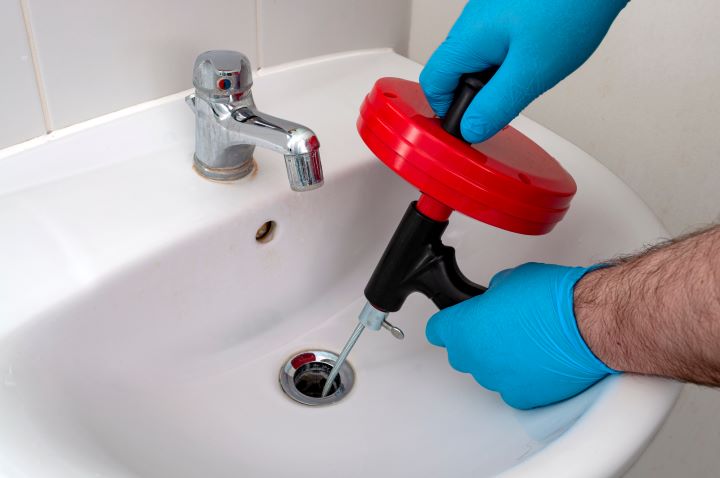Enzyme-based Methods for Breaking Down Organic Stains in Tile Gaps
Enzyme-based cleaning targets organic soils that collect in tile gaps and grout lines, offering a biochemical approach to break down residues rather than relying solely on abrasives or harsh acids. This method can soften and digest proteins, oils, and biological films that feed mildew and mold, making mechanical removal and restoration more effective.

How do enzymes work on organic stains?
Enzymes are biological catalysts that accelerate the breakdown of specific organic molecules common in grout contamination. Protease enzymes target protein-based soils such as food residue and body oils; lipases break down fats and oils; amylases act on starchy deposits. Applied as part of a formulated cleaner, enzymes loosen and convert complex organic matter into smaller, water-soluble components that rinse away more readily than intact residues. Because enzymes are substrate-specific, they tend to act on the stain but do not dissolve mineral components of tile or mortar when used at appropriate concentrations.
Which tile joints benefit most from enzymes?
Porous grout and older mortar joints that trap organic matter are the primary candidates for enzyme-based treatment. Joints in high-traffic kitchens, bathrooms, and entryways often accumulate oils, food particles, soap scum, and skin cells that support mildew and mold growth. Natural stone and cement-based mortars with open pores allow organic films to penetrate, so enzyme applications can access and break down those deposits. Nonporous glazed tiles will not be degraded by enzymes, but the grout between them can still benefit from targeted enzyme cleaning to restore appearance and reduce odor sources.
How to prepare joints: inspection and scraper use
Begin with a visual inspection to identify stain distribution, soft spots in mortar, and any existing mold or mildew. Use a stiff-bristled brush and a plastic scraper to remove loose surface grime before applying an enzyme formulation; this mechanical action increases contact between enzymes and the remaining organic material. Avoid metal scrapers that can damage grout or tile. For deep-penetrating stains, a light rinse to remove salts and soluble debris may improve enzyme activity. Record areas needing repair so that inspection-led decisions on restoration or replacement follow cleaning.
Enzymes, disinfectant, and mold/mildew considerations
Enzyme cleaners focus on breaking down organic substrates but are not always fungicidal. For active mold or heavy mildew, combine enzyme treatment with appropriate disinfectant steps after the organic layer is removed, following manufacturer guidance. Some disinfectants can inactivate enzymes if mixed directly, so sequence matters: enzymes first to remove nutrient sources, thorough rinsing, then a compatible disinfectant or antimicrobial treatment if remediation is required. Always ventilate the area, follow label directions, and test on a small patch to confirm compatibility with tile, mortar, and sealant.
Sealer, sealant, mortar, and restoration after cleaning
Once organic stains are reduced, allow joints and mortar to fully dry before applying any sealer or sealant. Properly selected penetrating sealers can help prevent re-absorption of organic soils and simplify maintenance, while surface sealants may alter appearance and require periodic renewal. For grout or mortar that has been physically degraded, repair or regrouting may be necessary as part of restoration. Use compatible mortar mixes and sealers designed for the substrate—ceramic, porcelain, or natural stone—to preserve joint integrity and reduce future staining.
Maintenance, repair, and ongoing stain prevention
Regular maintenance extends the benefits of enzyme cleaning. Weekly or monthly light cleaning with pH-neutral products removes fresh organics before they become embedded. Inspect joints periodically for cracking, softening, or recurrent mildew; timely repair prevents deeper contamination. Avoid mixing strong acids or harsh bleaches with enzyme treatments, as these can damage grout chemistry or deactivate enzymes. For stubborn or recurrent biological staining, combine mechanical repair, enzyme applications, and appropriate sealant strategies to create a layered approach to prevention and repair.
Enzyme-based methods provide a targeted, substrate-oriented option for reducing organic stains in tile gaps by converting complex residues into removable byproducts. When combined with careful inspection, gentle mechanical cleaning, appropriate disinfectant sequencing, and suitable sealing or repair measures, enzymatic treatment can be an effective part of a broader maintenance and restoration plan without relying solely on abrasive or highly corrosive chemicals.





